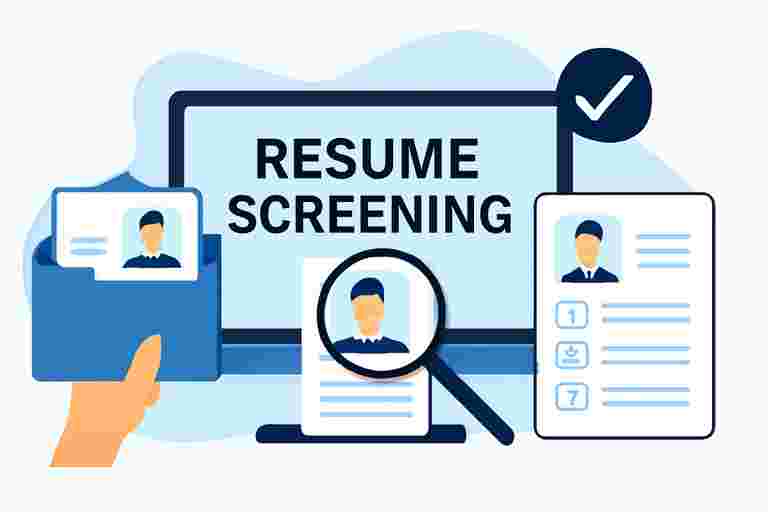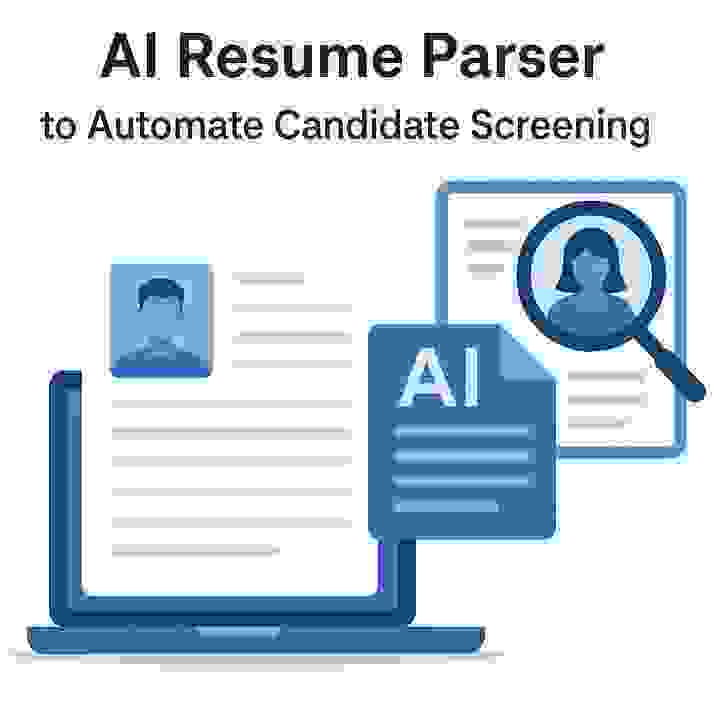
In today’s talent-driven market, an effective resume screener can be the deciding factor between recruiting top-tier candidates and losing them to competition. As recruiters are bombarded with hundreds of resumes for each role, traditional screening methods are no longer viable. Enter the age of AI-powered resume screening tools, reshaping how companies discover, assess, and hire talent.
In this comprehensive guide, you’ll learn everything about resume screeners—from how they work, to optimizing your resume for them, and the tools dominating the recruitment landscape.
What is a Resume Screener?
A resume screener refers to the process or tool used to evaluate resumes and shortlist candidates for a job. This screening can be manual (by a recruiter) or automated (using an ATS or AI resume parser). The primary goal is to identify applicants who best match the job criteria by scanning their qualifications, experience, and skills.
But in 2025, resume screeners aren’t just tools—they’re intelligent systems powered by machine learning algorithms. These solutions save time, reduce hiring costs, and enhance the quality of hire.
The Evolution of Resume Screening
Resume screening has come a long way. Here’s how it evolved:
-
Manual Screening Era: Recruiters manually reviewed resumes—a time-consuming and error-prone process.
-
Rise of ATS (Applicant Tracking Systems): Companies adopted ATS to parse resumes, but early systems lacked precision and often rejected qualified candidates.
-
AI-Powered Screening Today: Solutions like RChilli’s AI-driven resume screener are changing the game by understanding context, synonyms, and even intent behind candidate qualifications.
These advancements mean that job seekers and recruiters alike must understand how modern resume screeners function.
How Do Resume Screeners Work?
1. Manual Resume Screening
-
Recruiters scan resumes line-by-line.
-
They check for qualifications, job history, and skill alignment.
-
Common drawbacks: bias, time-intensive, inconsistent.
2. Automated Resume Screening
Modern resume screeners, especially those using AI and Natural Language Processing (NLP), follow these steps:
-
Resume Parsing: Extract structured data from resumes (e.g., name, contact info, skills, education).
-
Keyword Matching: Compare extracted data with the job description.
-
Scoring & Ranking: Rank candidates based on relevance and compatibility.
-
Shortlisting: Auto-generate lists of top-matching profiles for recruiter review.
RChilli’s solution takes it further with contextual analysis, ensuring it understands synonyms like “product lead” vs. “product manager.”
Features of an Effective Resume Screener
To be truly impactful, a resume screener must offer:
-
Multi-format parsing (PDF, DOCX, RTF, etc.)
-
Keyword and synonym intelligence
-
Contextual and semantic matching
-
Ranking & scoring mechanisms
-
Integration with ATS and CRMs
-
Language support for global hiring
-
Customizable filters
One example of such advanced capability is RChilli’s intelligent resume screening engine, which offers scalable, real-time parsing and ranking for enterprise-grade use.
Why ATS Compliance Matters
A well-designed resume can be invisible to screeners if not ATS-friendly. Here’s why:
-
Improper formatting, tables, or graphics can confuse parsers.
-
Headers and footers may not be parsed.
-
Images or icons are skipped entirely.
-
Non-standard fonts and colors may cause parsing errors.
✅ Tips to Make Your Resume ATS-Friendly:
-
Use clean, linear formatting (no tables or columns).
-
Stick to standard fonts (Arial, Calibri, Times New Roman).
-
Save your resume as
.docxor.pdf(without complex formatting). -
Clearly label sections: Education, Experience, Skills.
-
Avoid graphics or logos.
Want to ensure your resume performs well? Use an AI-powered resume screening solution like RChilli.
How to Optimize Your Resume for Resume Screeners
Success with resume screeners comes down to strategic optimization.
🔹 Tailor for Every Job
Customize your resume for each application:
-
Mirror the job description keywords.
-
Highlight relevant accomplishments.
🔹 Use Keywords Naturally
Incorporate skills and qualifications relevant to the role without keyword stuffing.
🔹 Emphasize Achievements Over Duties
Use data-driven accomplishments (e.g., “Increased revenue by 30%” instead of “Managed sales team”).
🔹 Keep It Concise & Relevant
Two pages max. Avoid fluff.
Popular Resume Screening Tools in 2025
There are several tools helping both candidates and recruiters in screening:
1. Jobscan
Analyzes resume against job descriptions. Ideal for job seekers optimizing resumes.
2. Resume Worded
Scores resumes and LinkedIn profiles. Offers keyword tips and recruiter insights.
3. RChilli
The most comprehensive AI resume screening solution for enterprises and ATS providers.
➡️ Explore a smarter approach to resume screening
Resume Screening Mistakes to Avoid
Even the most qualified candidates can be screened out due to common errors:
-
❌ Overuse of keywords (keyword stuffing)
-
❌ Fancy templates or visuals
-
❌ Wrong file formats (.jpg or .png resumes)
-
❌ Ignoring the job description
-
❌ Generic resumes used for every application
Fix these to boost your chances significantly.
Why Human Oversight Still Matters
While AI tools are efficient, they lack emotional intelligence and intuition. That’s why many organizations use a hybrid screening model, combining:
-
AI-based initial shortlisting
-
Human review for culture fit and potential
This ensures diversity, fairness, and a more holistic evaluation.
Future of Resume Screening
Here’s what we can expect in the coming years:
-
Deeper personalization through AI
-
Voice- and video-based resume screening
-
Bias detection mechanisms
-
Real-time screening during application
-
Skills-first hiring replacing degree-first models
Companies like RChilli are already pioneering these innovations, giving recruiters a head start on the future of hiring.
Frequently Asked Questions (FAQs)
❓ What is a resume screener?
A resume screener is a person or software used to evaluate resumes based on their match to a job description.
❓ How do resume screeners work?
Automated screeners parse, evaluate, score, and rank resumes using AI and keyword algorithms.
❓ How can I make my resume pass through a screener?
Make it ATS-compliant: clean formatting, job-specific keywords, no graphics or images.
❓ Is RChilli a resume screener?
Yes, RChilli offers an AI-powered resume screening solution used by global enterprises and ATS platforms.
❓ How do I test if my resume is ATS-friendly?
Use platforms like Jobscan or Resume Worded for analysis, or get your resume screened using an AI tool like RChilli.
-
Optimize your resume for ATS – Jobscan
-
Free ATS resume scan tool – Resume Worded
-
Resume screening for recruiters – Indeed
Final Thoughts: Rethink Resume Screening with Intelligence
The resume screener has evolved into a powerful tool at the heart of modern recruitment. From parsing resumes in milliseconds to ranking candidates with precision, AI-powered screeners are streamlining hiring like never before. But behind every great algorithm is a strategy—and understanding how to optimize for screeners can be your greatest advantage.
If you’re an organization aiming to future-proof your recruitment or a job seeker trying to stand out, explore the smarter way forward with RChilli’s intelligent screening capabilities.
👉 Discover how to transform your hiring with AI-powered resume screening







